We were trapped in Basil all of yesterday evening by heavy rain and a series of thunderstorms, although by 10 pm the rain had stopped and we could look across the valley at the atmospherically illuminated town of Morella.
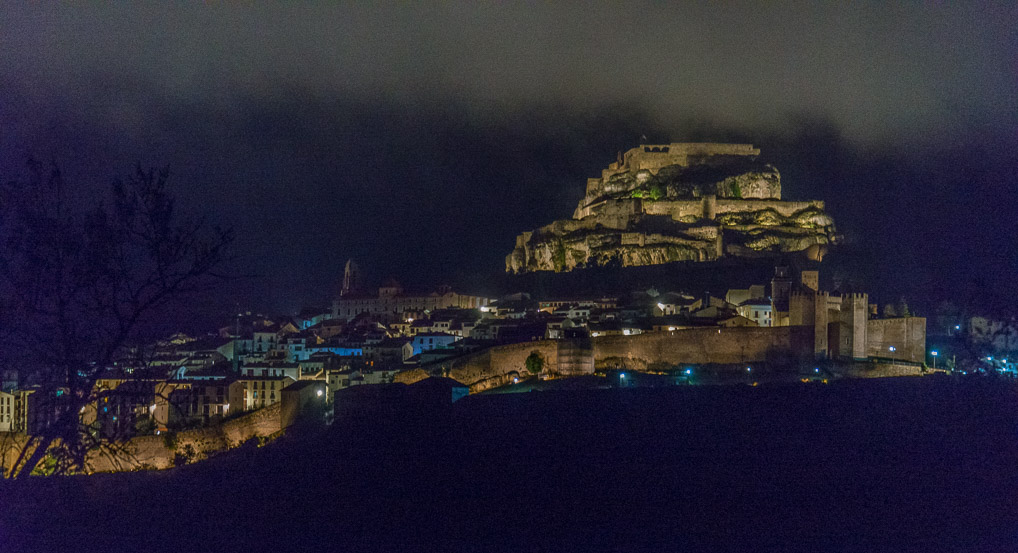
Morella at night
As morning dawned the sun had returned but because we were at 3,000 feet the temperature was barely over 10 degrees. Sarah and I donned fleeces and coats (although I insisted on retaining my shorts a bit longer) and walked the two miles or so into Morella.
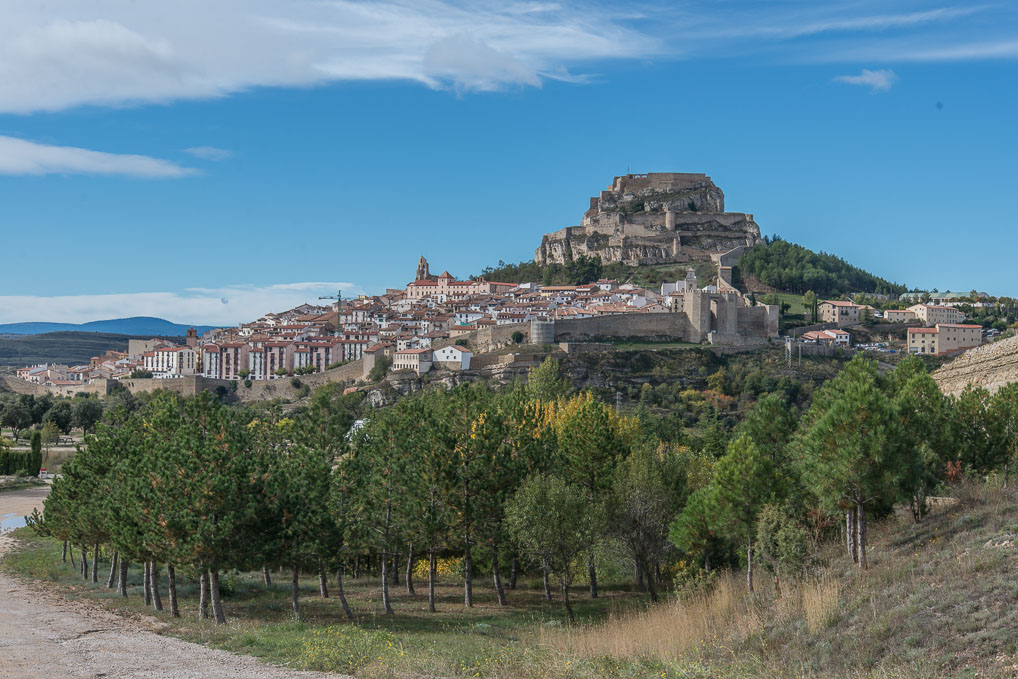
Morella
Before we reached the town we came across the remains of an old aqueduct. I always associate aqueducts with the Romans but apparently this one was built in the 12thcentury to supply water to the town.

Morella Aquaduct
Morella itself is another one of these fortified medieval towns, which seem so common in Spain. The town is entered through enormous gates set in the complete medieval walls. Once inside it is clear that Morella is more popular in the summer months than some of the other similar towns we have visited. The streets are full of shops aimed at tourists, restaurants and hotels. There are even one or two tasteful tat shops. Today we almost had the town to ourselves.
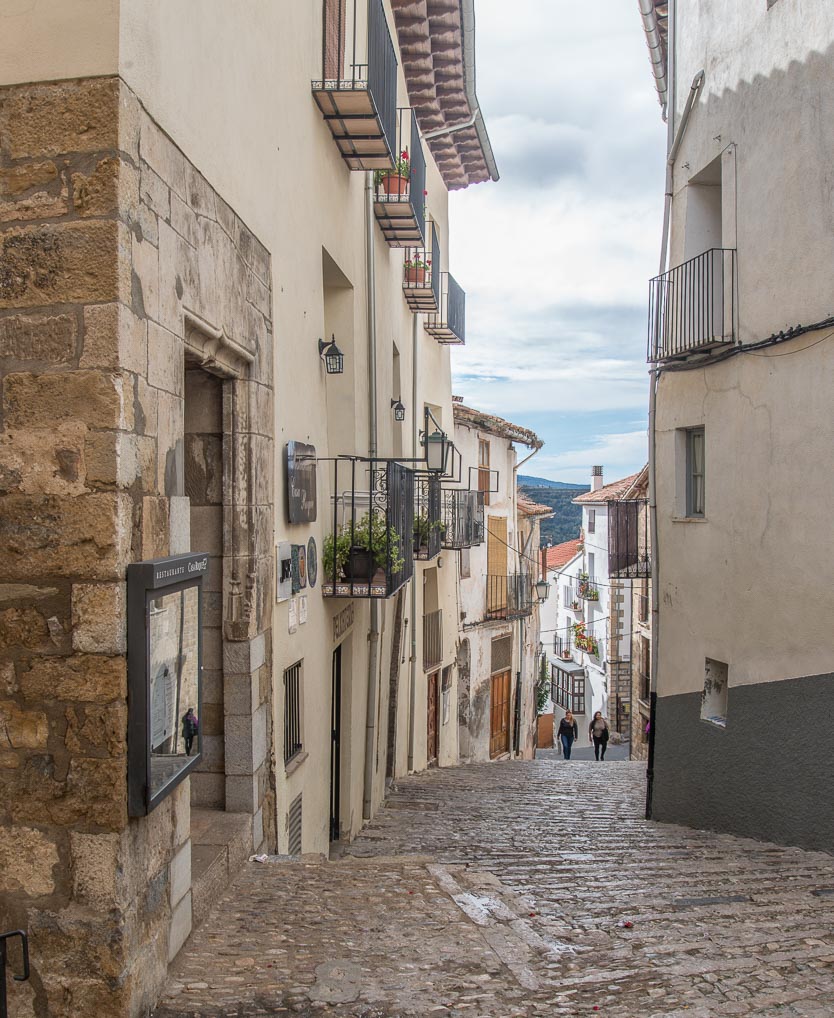
Morella Street Scene
We ambled the streets making our way slowly upwards to what the Rough Guide considers the main attraction of the town – the church. Unfortunately for us the church was undergoing extensive restoration, which will be great for future visitors, but was of little use to us!
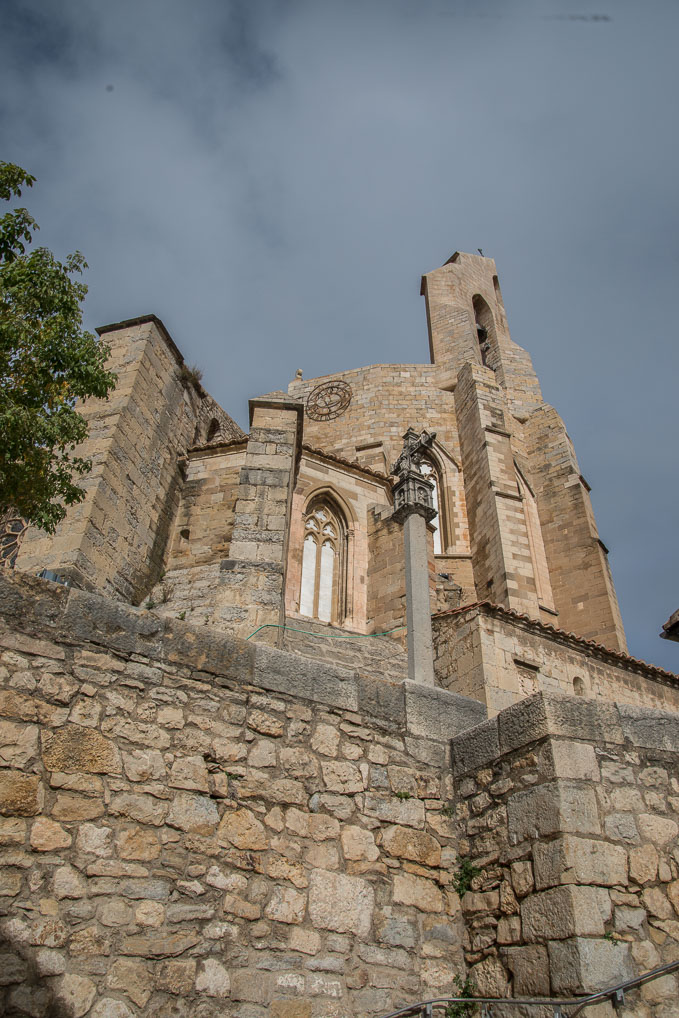
Morella Church
The mountains in which Morella is set are famous for cheese and truffles. I stopped off at a cheese shop and asked in my best Spanish for a strong tasting cheese and the proprietor gave me a few samples to try. One hard goats cheese was fantastic and I immediately bought half a kilo! One other speciality of the area are a type of pasty and so we indulged our selves and bought a savoury one each and a sweet pasty to share between us.
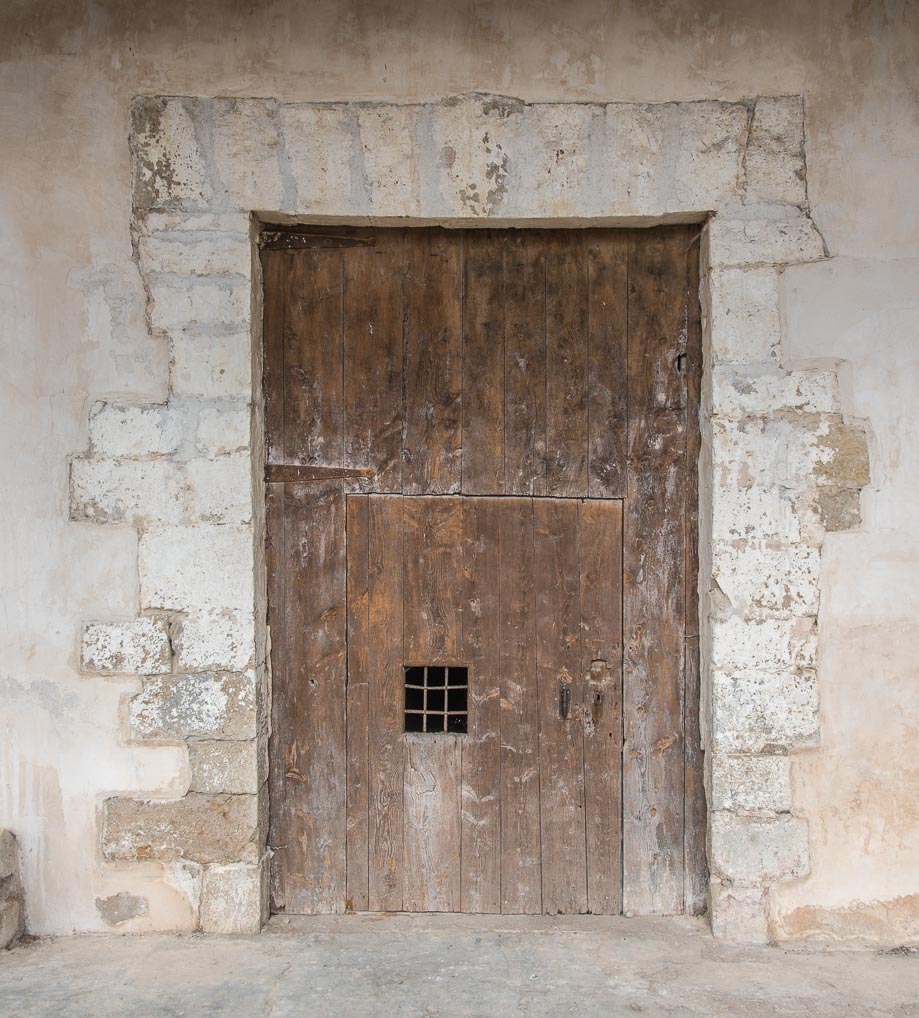
Door of the day
On our way back to Basil we passed an agricultural supply merchants and were much amused to find cowbells and the straps for attaching them to the animals, for sale in the window. We thought about buying one, but at €18 for the smallest model we decided against it.
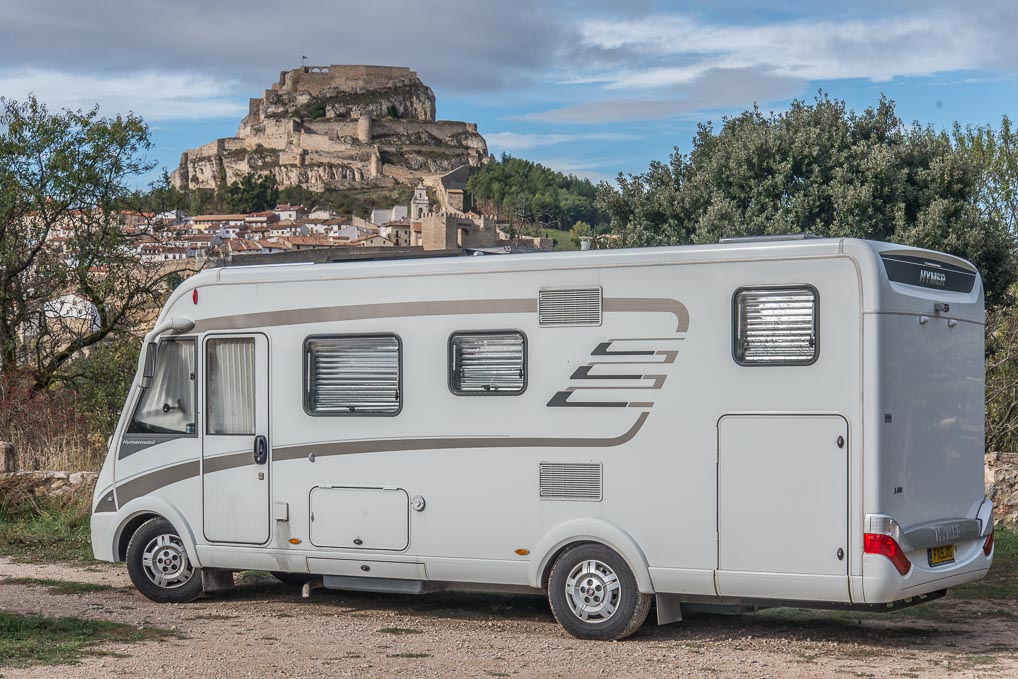
Basil at his Morella aire
We set off in the direction of Zaragoza shortly before lunch and soon found a good picnic area next to a convent which has been abandoned in the 18thcentury, but which from the front still looked picturesque. The rear by contrast was falling down. Sarah and I pigged out on our pasties, mine being a superb cured meat and garlic version, which I have to say gave a Cornish pasty a run for its money. We could not resist trying the cheese and we both agreed it is one of the best cheeses we have ever tasted – a strong taste, with the sharp tang of a good goaty cheese and the aftertaste lingers, in good way, for minutes after each taste.
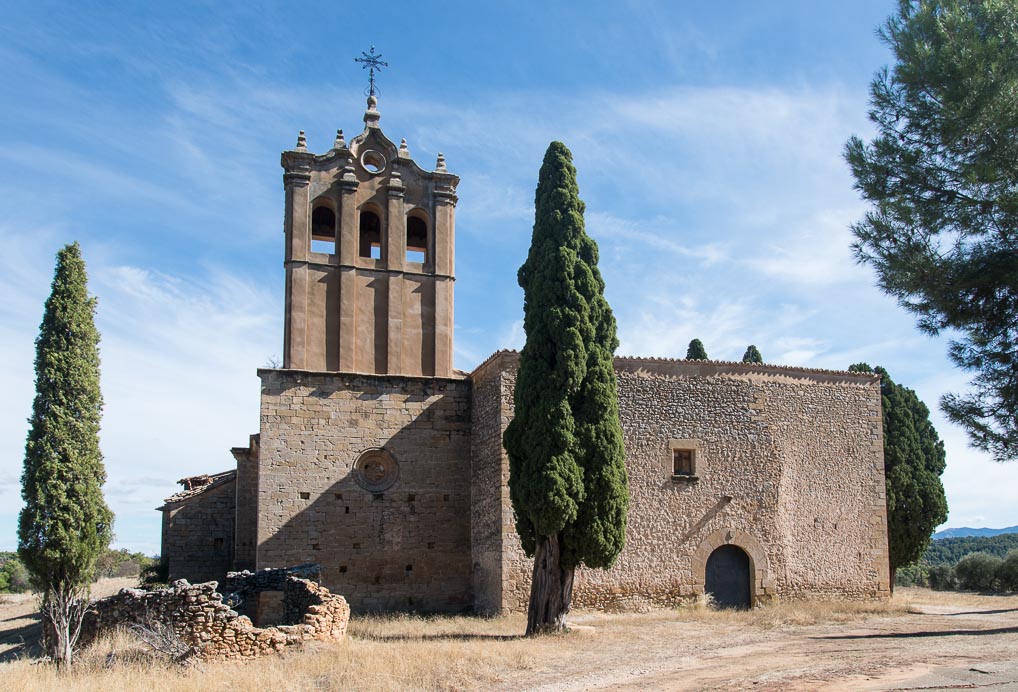
Convent at our picnic spot
One of our plans today had been to stop at Belchite a ruined village left as a monument to the Spanish Civil War, but my brother and his family have been in this area of Spain during the summer and he emailed me to warn that entry was by guided tour only. I did some research and realised that with the dogs and the possibility that tours would not run in October we would have to abandon this plan.
Instead we stopped off at LIDL (hardly culturally comparable to a war memorial) in a town called Alcaniz, which also had an aire. Following our shop we visited the aire, and I think for only the second time this trip we didn’t like the look of it. I quickly scanned my various apps and found another aire in a small town on the way to Zaragoza, which looked more promising.
On our journey from Alcaniz we passed through what looked like very fertile land, with most fields ploughed. One unusual feature though is that many fields contained an elaborate, permanent, sprinkler system. Each sprinkler protruded vertically from the soil to a height of about two metres and were spaced about 10 metres from each other. One or two fields of corn were unharvested and contained these sprinkler systems, so we presume they are primarily used for corn, but it is surprising that such an elaborate irrigation system makes economic sense.
We arrived to find the town of Albalate del Arzobispo to be set in amongst some bizarre rock formations. The aire (41.121206, -0.507293) itself is huge, brand new, free, has full facilities and set next to a river. Our arrival was too late to allow us to explore the town, so with Zaragoza our target for tomorrow I’m not sure whether we will get chance to venture in or not.
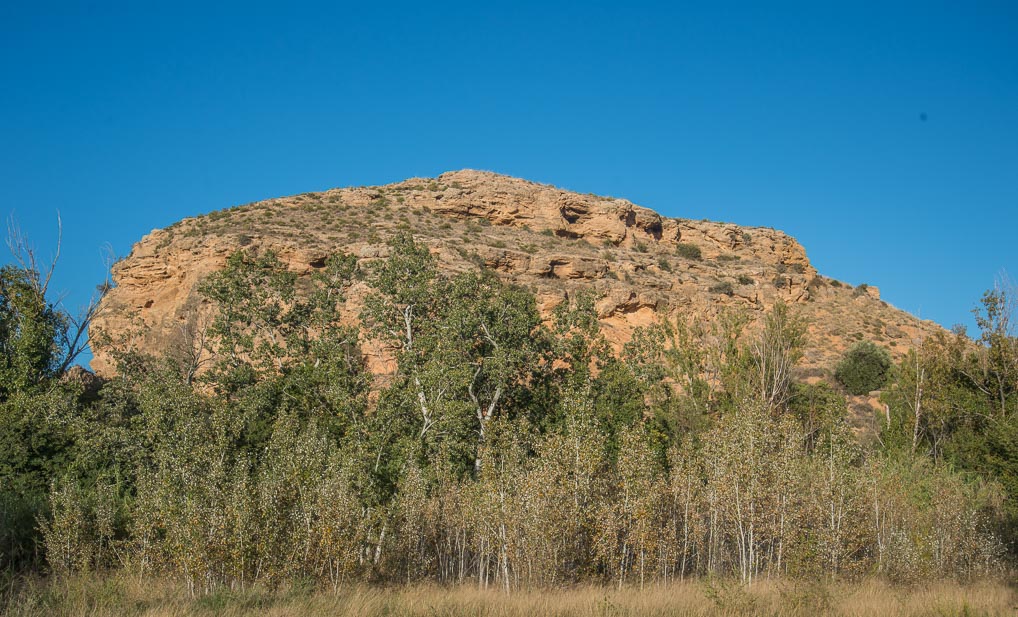
Rock formation from Basil at our current aire
